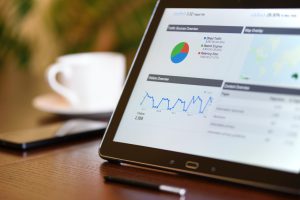Purchasing price analysis accounting is the process of calculating the difference between the prices you allocate for purchases and the amount you actually spend. If your analysis leads to a positive figure, your actual costs for purchases will increase.
In this calculation, the time between purchases is the average amount of days a customer spends between two purchases, retrospectively to the past 365 days. More explicitly, the time segmentation between purchases only includes customers whose first purchase was made with that segment, for example a particular product or from a particular village.
It is important to note that you should align your expectations of this criterion with your overall understanding of sales in certain seasons and holidays, for example. Cold medicine is mostly sold in winter and heat exhaustion medicine is sold in summer. So, in general, from a benchmarking point of view, you should always compare your business with other similar jobs to determine if you are performing well or if you need to increase your customer retention.
A good formula for this is that:
Time between purchases average = 365/ (Number of orders in past 365 days/number of unique customers in past 365 days)
In terms of customer churn, this is important with respect to retention, not because you can measure a customer’s loyalty, but because it removes customer skepticism about your product and helps you understand how satisfied your customers are.
Overall, Purchases analysis is profitable, simply because your customers are shopping, and this has a byproduct in the shape of data. You can use this insight to approach your customers at the right moment and try to persuade them to buy from you again creatively, not just some tentatively blind try.
How to Calculate Purchase Frequency?
According to a survey published in January 2021, over 40% of online buyers in the United States purchased online once or twice a week. Plus, almost a quarter of respondents in the North American countries reported shopping once every two weeks. This is the purchase frequency in North Americas.
You can give away the average amount of orders done by each customer by taking a deep reading the purchase frequency. Using the same time period to reckon the average order value, you need to divide the total number of your orders by the whole number of your customers, every single of them. The result will be how many times they buy.
Calculating Purchase Frequency (PF)
To calculate Purchase Frequency, divide your whole number of orders by the number of unique customers for the same time period. Purchase Frequency is functionally the average number of orders made by per customer. The result will be the purchase frequency, which is used to provide publicity department and the like with a lucrative insight.
Keep in mind that if you sell high-end items, long-lasting products, don’t expect your PF to be as high as a brand that sells low-cost goods.

Tips to increase purchase frequency
To increase your purchase frequency, first and foremost, a strong connection between you and the customer is really worthwhile. Not only does it increase the trustable relationship, but also it can make you a sustainable customer pool information with which you would be able to afford better services and support team towards a high-rocketed growth.
So, your way of communication plays a pivotal role in this play. For instance, the use of asynchronous communication tools can be of help in this regard. Emails, WhatsApp and Telegram channels are suggestive of what we call as the asynchronous campaigns here. To do so, here are some tips:
- Ask your customers when they prefer to buy, and send them a reminder when it’s the time;
- Recommend new items based on their interests;
- Send helpful “how-to-use” content in order to show your products advantages.
- to decrease friction for new customers, you can provide them with a newsletter via Email;
- Stay top-of-mind between purchases with useful messages full of content that your customers will be passionate about.
To sum, 86% of customers are willing to buy more for a great customer experience, which will be discussed in the following part of this article.
Customer engagement
Customer engagement is an intelligent and emotional connection between the customer and the seller. As a matter of fact, the more your customer is engaged, the more he or she will buy. It is reported that almost 83% of customers now expect highly involving experience while contacting a company for the first time, in comparison to this rate in 2019 which was 78 percent.
Advertisement, discount, additional information about the items and the background and also to reveal more details about the context are means by which you can involve them. Moreover, providing a memorable customer experience is a momentous indicator of your customer engagement strategy.
If I want to summarize my whole discussion in one sentence, how to treat a customer is the key to unlocking more of the purchases.
Gamification and customer engagement
Gamification is a new approach that can teach businesses how to effectively reward customers for channelized behaviors by rewarding them creatively. This helps businesses better plot their strategies and stimulus plans because they have a good insight of customer demeanor as a buyer and hence, can be used to boost customer-employee emotional connection.
As a matter of fact, I gave away from some articles that these gamified initiatives have raised customer engagement by 48%. What’s more, approximately 72% of buyers report feeling motivated to buy more items. In a similar vein, gamification has been demonstrated to boost salesmen’s keen sense of enthusiasm by 90%.
In another study, according to the International Journal of Educational Technology in Higher Education, gamification avoided customer churn by 12.23% and increased overall performance by 7.03%.
Final Words
Information gained from studying how a customer behaves is valuable. When there is a gap between two purchases, one of the most basic and efficient pieces of information available is the time period which is called a time between purchases or purchase frequency. Not surprisingly, a lot of means would come through purchase analysis which are based on this specific measure; to sum up, since purchase analysis provides a really insightful consternation, you should be aware of its importance and its effect on your growth rate.



